Having spent over 15 years in the plastics and elastomer industry, I’ve worked with manufacturers across sectors like automotive, consumer goods, and footwear, helping them tweak materials to meet specific needs. One question that often comes up when modifying TPR (Thermoplastic Rubber) is whether blending it with PS (Polystyrene) can boost its hardness. It’s a practical concern—maybe you’re designing a product that needs to be stiffer than standard TPR but still retain some flexibility, like a tool grip or a shoe sole. Based on my hands-on experience with material compounding and real-world applications, I’ll dive into whether PS can effectively increase TPR’s hardness, the challenges involved, and how to make it work. Let’s explore this with a focus on clarity and practicality, grounded in my years of trial and error.
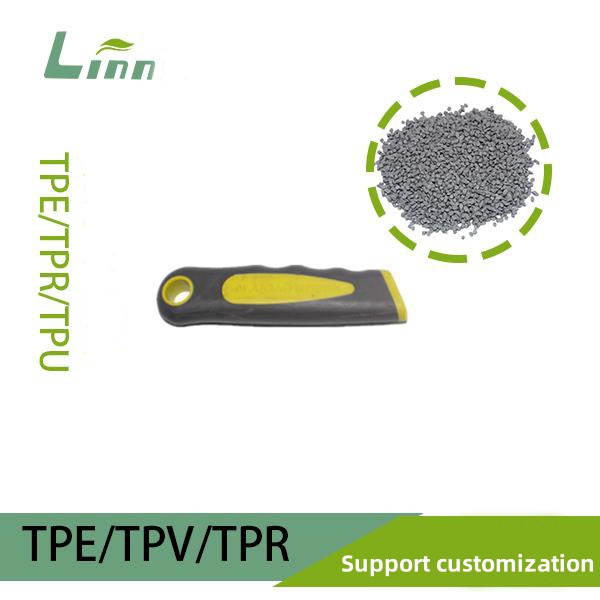
Why Hardness Matters in TPR Applications
TPR, a type of thermoplastic elastomer, is loved for its rubber-like flexibility, soft touch, and easy processing. Typically based on SBS (Styrene-Butadiene-Styrene) or SEBS (Styrene-Ethylene-Butylene-Styrene), it’s used in everything from soft grips to flexible seals. However, its softness (often 20–90 Shore A) can be a limitation for applications requiring more rigidity, like structural components or durable footwear. Increasing hardness without sacrificing too much elasticity is a common goal, and blending with a rigid polymer like PS seems like a logical solution. But does it work? Let’s break it down.
Understanding TPR and PS
Before we dive into blending, let’s clarify the materials:
TPR is a flexible, rubbery material that combines the elasticity of rubber with the melt-processability of plastics. Its hardness can be tuned by adjusting the styrene content or adding fillers, but it’s inherently soft.
PS is a rigid, brittle thermoplastic available in general-purpose (GPPS) and high-impact (HIPS) forms. GPPS is clear and very stiff, while HIPS is tougher but less transparent. Both have much higher hardness (around 70–80 Shore D) than TPR.
In my early days consulting for a toy manufacturer, I saw confusion when clients assumed PS’s rigidity would automatically “stiffen up” TPR. The reality is more complex, as blending depends on compatibility, processing, and the desired outcome.
Can PS Increase TPR Hardness?
The short answer is: Yes, blending PS with TPR can increase hardness, but it’s not a simple mix-and-match process. The effectiveness depends on chemical compatibility, blend ratios, processing conditions, and the intended application. Here’s what I’ve learned from years of compounding and testing these materials.
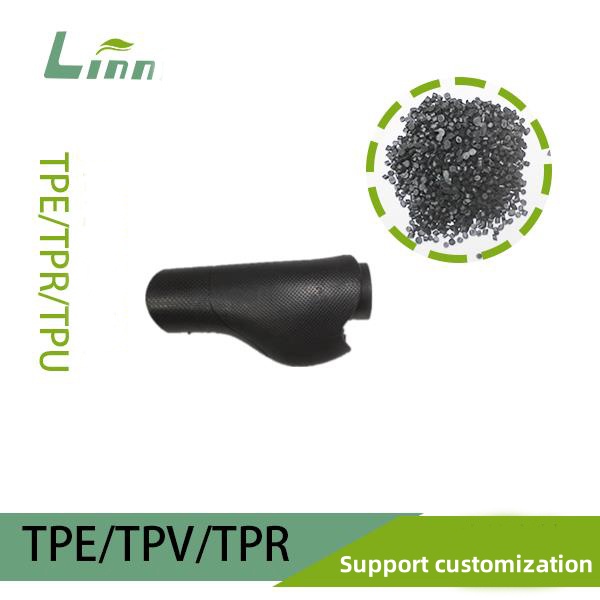
1. Chemical Compatibility
TPR and PS can be compatible to an extent because both often contain styrene components. For example:
SBS-based TPR shares a styrene backbone with PS, making blending more feasible.
SEBS-based TPR is less compatible due to its saturated ethylene-butylene midblock, which can lead to phase separation when mixed with PS.
When I worked on a project for a tool grip manufacturer, we successfully blended SBS-based TPR with HIPS to increase hardness from 40 Shore A to 60 Shore A. However, blending SEBS-based TPR with GPPS resulted in a grainy, inconsistent material due to poor compatibility.
2. Effect on Hardness
PS is much stiffer than TPR, so adding it increases the blend’s hardness. The degree of increase depends on the blend ratio:
Low PS content (10–20%): Slightly increases hardness (e.g., from 40 to 50 Shore A) while retaining flexibility.
Moderate PS content (20–40%): Significantly boosts hardness (e.g., to 60–70 Shore A) but reduces elasticity.
High PS content (>40%): Makes the blend rigid (approaching Shore D), often losing TPR’s rubbery feel.
In a footwear project, we added 25% HIPS to SBS-based TPR, raising hardness from 50 to 65 Shore A, ideal for a semi-rigid sole. Beyond 40% PS, the material became too brittle for practical use.
3. Trade-Offs in Properties
Increasing hardness with PS often comes at a cost:
Reduced Elasticity: PS’s rigidity decreases TPR’s stretch and recovery, which can affect performance in flexible applications.
Brittleness: High PS content makes the blend prone to cracking, especially under impact.
Aesthetic Issues: PS can cause haziness or streaking in transparent TPR, especially with GPPS.
Processing Challenges: PS has a higher melting point (200–240°C) than TPR (180–220°C), complicating blending.
In a consumer electronics project, we blended 30% PS with TPR for a stiffer phone case but noticed reduced tear resistance, requiring us to add a toughening agent to balance properties.
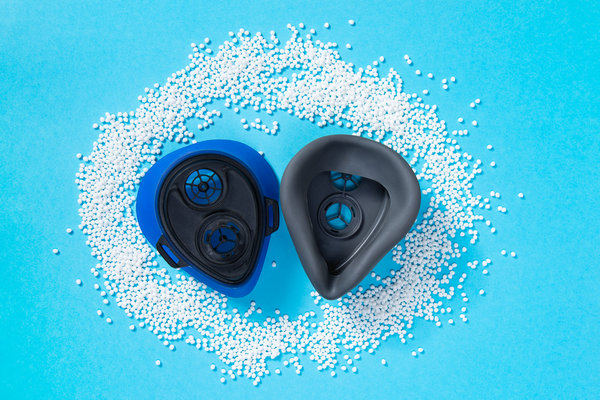
How to Blend PS with TPR for Increased Hardness
Here’s how I’ve approached this in real-world projects to ensure success:
1. Choose the Right TPR and PS
Match the base polymers for better compatibility:
Use SBS-based TPR with HIPS for most applications, as their styrene content aids blending.
Avoid SEBS-based TPR with GPPS unless you’re using a compatibilizer, as phase separation is likely.
Contact suppliers for technical data sheets (TDS) to confirm polymer composition and melt flow indices (MFI). In a project for automotive seals, we used HIPS with SBS-based TPR to achieve a 70 Shore A hardness without sacrificing seal flexibility.
2. Test Blend Ratios
Start with small-scale tests to find the optimal PS content. Common ratios I’ve tested:
10–20% PS: Slight hardness increase, good for soft grips.
20–30% PS: Moderate hardness for soles or mats.
30–40% PS: High hardness for semi-rigid parts, but test for brittleness.
Use a lab-scale twin-screw extruder to blend small batches (e.g., 1–5kg). Measure hardness (Shore A/D per ASTM D2240), tensile strength (ASTM D412), and elongation to ensure the blend meets your needs. In a toy wheel project, we settled on 20% HIPS after testing showed it increased hardness from 45 to 60 Shore A without losing flexibility.
3. Use Compatibilizers
For dissimilar TPR and PS (e.g., SEBS with GPPS), a compatibilizer like maleic anhydride-grafted SEBS or styrene-maleic anhydride (SMA) can improve blending by reducing phase separation. In a project for a rigid TPR mat, adding 2% compatibilizer improved homogeneity and increased tensile strength by 10%.
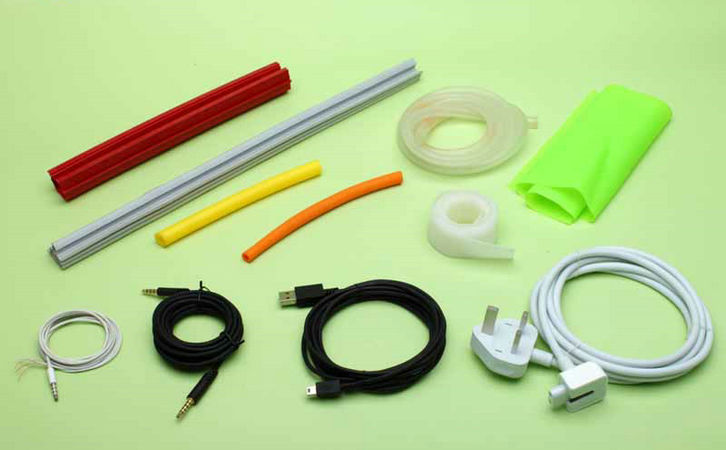
4. Optimize Processing Conditions
Fine-tune your equipment:
Temperature: Set the extruder to 190–220°C to balance TPR and PS melting points. Too high, and PS degrades; too low, and TPR doesn’t mix well.
Screw Speed: Use moderate shear (100–200 rpm) for uniform dispersion.
Cooling: Ensure consistent cooling to avoid internal stresses or warping.
In a production run for TPR tool handles, we adjusted the extruder to 205°C and 150 rpm, achieving a smooth 65 Shore A blend with 25% HIPS.
5. Test Mechanical and Aesthetic Properties
After blending, test for:
Hardness: Use a Shore durometer to confirm the target range.
Tensile Strength/Elongation: Ensure the blend isn’t too brittle (ASTM D412).
Impact Resistance: Test for cracking, especially with high PS content (ASTM D256).
Appearance: Check for haziness, streaking, or color shifts.
In a project for a TPR keyboard wrist rest, we noticed streaking with 30% GPPS. Switching to HIPS and lowering the ratio to 20% restored clarity.
6. Consider Additives
To mitigate PS’s downsides:
Toughening Agents: Add impact modifiers like EVA or TPU to reduce brittleness.
Stabilizers: Use antioxidants or UV stabilizers to prevent degradation, especially if the blend is exposed to sunlight.
Plasticizers: Small amounts can restore some flexibility lost to PS.
In a flooring project, we added 1% plasticizer to a TPR/PS blend to maintain flexibility at 70 Shore A.
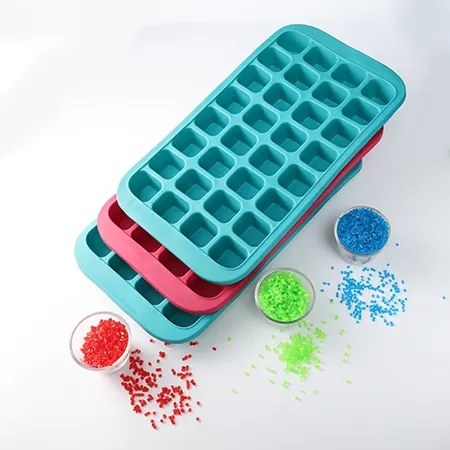
Comparison of TPR and TPR/PS Blends
Here’s a table summarizing how PS affects TPR, based on my observations:
| Material | Hardness (Shore) | Flexibility | Applications |
|---|---|---|---|
| Pure TPR (SBS) | 20–90 A | High | Grips, seals, soft soles |
| TPR + 20% HIPS | 50–70 A | Moderate | Tool handles, mats |
| TPR + 40% HIPS | 70 A–20 D | Low | Rigid soles, casings |
| TPR + 20% GPPS | 55–75 A | Moderate | Clear parts, toys |
This table helps predict how PS impacts TPR’s properties for your application.
Challenges of Using PS to Modify TPR
Blending PS with TPR isn’t without risks. Here’s what I’ve seen go wrong:
Phase Separation: Incompatible blends (e.g., SEBS with GPPS) form layers, weakening the material. Seen in a failed TPR/PS toy wheel that cracked under stress.
Brittleness: High PS content (>40%) makes the blend prone to cracking. A client’s TPR/PS sole shattered during impact testing at 50% PS.
Processing Issues: Mismatched melting points can cause clogging or uneven flow in extruders.
Aesthetic Flaws: GPPS can cause haziness in transparent TPR, as I saw in a clear TPR/PS phone case.
In a project for a TPR mat, we initially used 35% GPPS, but the blend was too brittle. Reducing to 20% HIPS and adding a toughening agent fixed the issue.
Alternatives to PS for Increasing TPR Hardness
If PS blending poses too many challenges, consider these alternatives:
Increase Styrene Content: Use a TPR grade with higher styrene in its SBS/SEBS structure for natural hardness. Suppliers like Kraton offer high-styrene grades.
Add Fillers: Incorporate calcium carbonate, talc, or glass fibers to boost hardness. Fillers are cheaper but may reduce elasticity more than PS.
Blend with PP (Polypropylene): PP is more compatible with SEBS-based TPR and increases hardness while maintaining some flexibility. I used this for a TPR tool tray, achieving 75 Shore A.
Use Rigid TPEs: Switch to a stiffer TPE, like TPU or TPO, for applications needing high hardness without blending.
In a project for a semi-rigid TPR seal, we replaced PS with 30% PP, achieving better compatibility and a 70 Shore A hardness with minimal elasticity loss.

Practical Tips for Success
Here’s a checklist I share with clients:
Verify Compatibility: Confirm TPR and PS types via supplier TDS or FTIR testing.
Test Small Batches: Blend 10–40% PS in a lab extruder to find the optimal ratio.
Use Compatibilizers: Add maleic anhydride-grafted polymers for dissimilar blends.
Monitor Processing: Adjust temperature (190–220°C) and screw speed for uniform mixing.
Test Thoroughly: Measure hardness, tensile strength, impact resistance, and aesthetics.
Balance Properties: Use toughening agents or plasticizers to counteract brittleness.
Safety and Environmental Considerations
Blending TPR and PS involves high temperatures (190–240°C), so ensure proper ventilation to avoid inhaling fumes, especially from PS, which can release styrene monomers. Wear gloves and eye protection when handling molten materials. Environmentally, TPR/PS blends are recyclable, but high PS content may complicate recycling due to brittleness. Check with recycling facilities to confirm compatibility.
In a project for eco-friendly TPR toys, we used HIPS over GPPS to improve recyclability, aligning with the client’s sustainability goals.
Cost Implications
Adding PS is cost-effective, as PS ($1–$2/kg) is cheaper than TPR ($2–$5/kg). For a 10,000kg run, blending 20% HIPS saves $3000–$6000 compared to pure TPR. However, testing and compatibilizers add costs ($500–$2000 for lab trials). Compare this to fillers like calcium carbonate ($0.5/kg), which are cheaper but may degrade flexibility more.
Real-World Examples
I’ve seen both wins and losses:
Success: A tool grip manufacturer blended 25% HIPS with SBS-based TPR, increasing hardness from 50 to 65 Shore A while maintaining grip comfort, passing durability tests.
Challenge: A toy company used 40% GPPS with SEBS-based TPR, resulting in a brittle, hazy product. Switching to 20% HIPS and a compatibilizer restored performance.

Conclusion
Blending PS with TPR can indeed increase hardness, making it a viable option for applications needing a balance of rigidity and flexibility. However, compatibility, blend ratios, and processing are critical to avoid issues like brittleness or phase separation. My years in the industry have taught me that small-scale testing, supplier collaboration, and strategic use of compatibilizers are the keys to success. If PS doesn’t meet your needs, alternatives like PP or high-styrene TPR can deliver similar results with fewer headaches. Start with a clear goal, test thoroughly, and consult material experts to ensure your TPR/PS blend performs as expected. Here’s to creating products that hit the perfect hardness sweet spot!
Related Questions and Answers
Q: How much PS should I add to TPR to increase hardness?
A: Start with 10–20% for a slight increase (e.g., 40 to 50 Shore A). For more rigidity, try 20–30%. Test small batches, as >40% can make the blend too brittle.
Q: Is HIPS or GPPS better for blending with TPR?
A: HIPS is generally better, especially with SBS-based TPR, due to higher compatibility and less haziness. GPPS works for clear parts but may cause phase separation with SEBS.
Q: Will blending PS with TPR affect flexibility?
A: Yes, PS reduces elasticity. Low PS (10–20%) maintains decent flexibility; higher amounts (30–40%) make the blend stiffer and more brittle. Add toughening agents to balance properties.
Q: Can I use recycled PS with TPR?
A: Yes, but test rigorously, as recycled PS may contain impurities or additives that cause incompatibility. Use a compatibilizer and verify mechanical properties.
Q: Are there cheaper ways to increase TPR hardness?
A: Yes, fillers like calcium carbonate or talc are cheaper ($0.5/kg vs. $1–$2/kg for PS) but may reduce flexibility more. PP blending is another cost-effective option with better compatibility.





